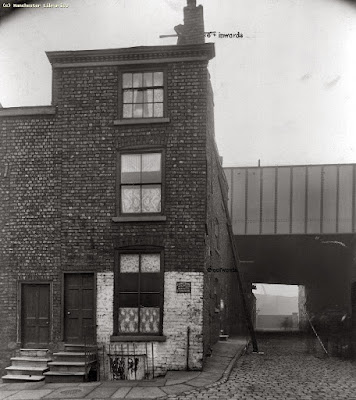 |
| Cover of What Happened to Tom Mix? 1969 |
And when I say knew I mean just that. Ted Willis was a writer and politician and for just over a year I went out with his daughter.
I was welcomed into the family and even went on holiday with them which was pretty much something given that it was a cruise around the Mediterranean
on the Canberra.
It was around the time of that holiday that he told me about Tom Mix and his autobiography which I rather think he wrote during that cruise.
Whatever Happened to Tom Mix? covers the first thirty years of his life and is a vivid account of growing up in a poor part of London.
Here are the stories of children’s games including clay marbles, box carts and “knock down ginger” of cheap sweets which were still on offer when I was growing up and of harsh as well as inspiring teachers who offered an exciting window into another world.
It is of course a book of its time and just thirty years later while I was growing up in a similar part of London much had changed to make my childhood less of a struggle.
That said I grew up with the stories of the Hunger Marches, the Means Test, and the long years of unemployment which dominated the decades between the end of the Great War and the start of that war against Hitler.
They were still bit deep into my mother’s mind, including being sacked at the end of her apprenticeship at the local silk factory along with all the others because to retain them on the pay roll would have been to pay them a full wage.
And also the accounts of my grandfather walking the five miles out of the town because he had heard that a local firm were taking on men only to find a hundred were already at the factory gates.
All of these were here in the autobiography and like my mother’s memories were overlaid with a clear political message of where the blame lay for the social injustice of the period.
 |
| Advance, 1938 |
And it is this part of the book which fascinates me most for here is a vivid account of the political struggles and his own experiences of Spain which he visited three times during the war.
Even now I do have to sit back and reflect that the first time Ted made his way to Madrid by a long and torturous route he was just 19 the same age as I was when I came to Manchester, but while I had done a series of temporary jobs after school spoke a lot about the injustices of the world he had organised the massive job of coordinating food and medical supplies from a warehouse in London and visited Spain three times.
But he would have been the first to point out that everyone’s contribution is different and mine was to come later, although even now I cannot claim it ranks with his.
So the final words are his
“We did not accept the world as it was, and we put what strength we had to the task of changing it for the better.”
Now you can’t say more than that. Along the way I was introduced to London which was familiar but still different, of child hood games I also played and of a world alternating between great hardship and hope.
And as for Tom Mix, well you have to be of a certain generation to know of him. In my case it was Ted who introduced me.
Picture; from the cover of Whatever Happened to Tom Mix? and Advance, paper of the Labour League of Youth edited by Ted Willis, 1938, courtesy of hayes peoples history, http://ourhistory-hayes.blogspot.co.uk/2008_09_01_archive.html
















































